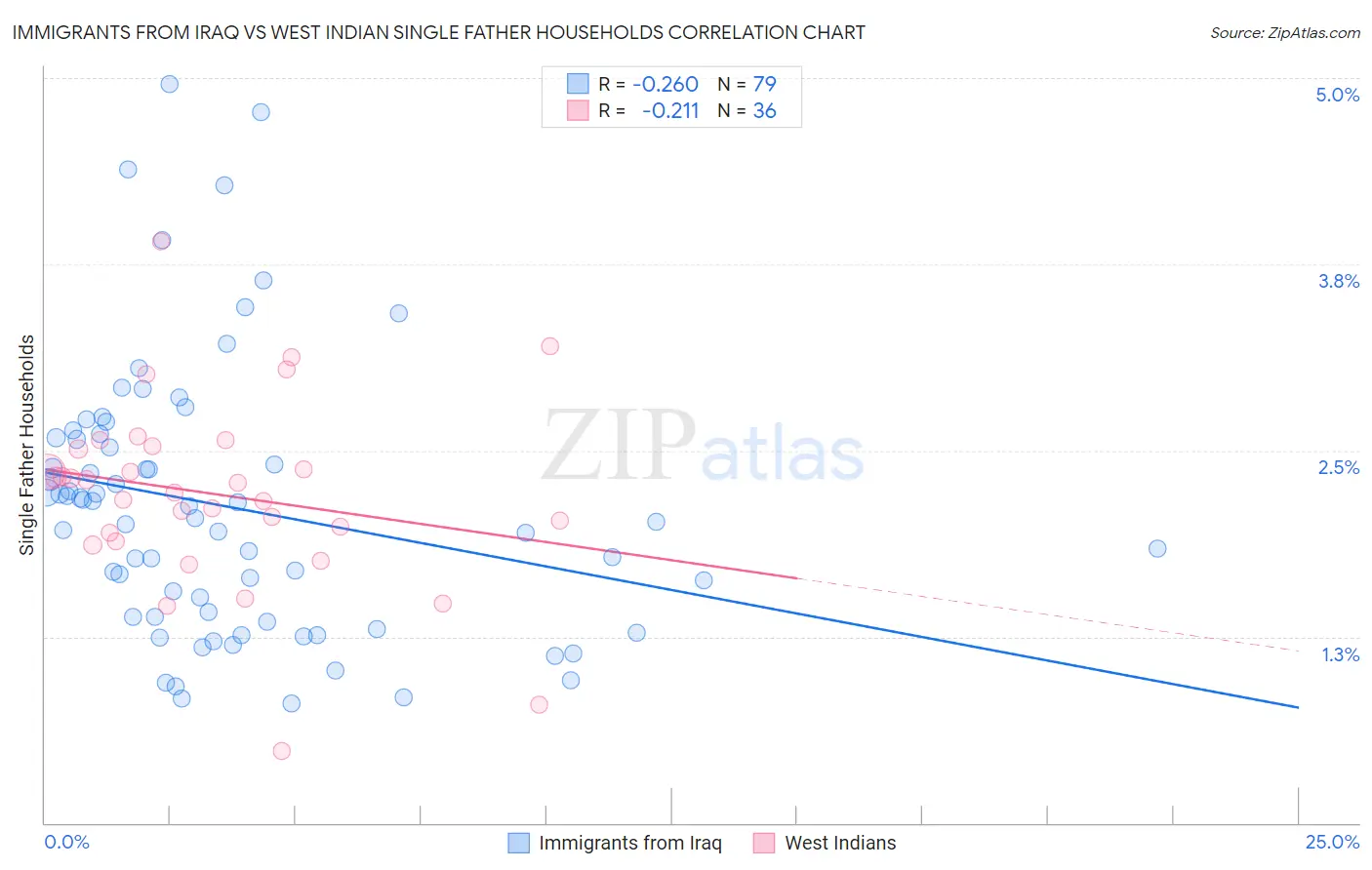Immigrants from Iraq vs West Indian Single Father Households
COMPARE
Immigrants from Iraq
West Indian
Single Father Households
Single Father Households Comparison
Immigrants from Iraq
West Indians
2.2%
SINGLE FATHER HOUSEHOLDS
97.6/ 100
METRIC RATING
122nd/ 347
METRIC RANK
2.2%
SINGLE FATHER HOUSEHOLDS
94.1/ 100
METRIC RATING
138th/ 347
METRIC RANK
Immigrants from Iraq vs West Indian Single Father Households Correlation Chart
The statistical analysis conducted on geographies consisting of 194,132,696 people shows a weak negative correlation between the proportion of Immigrants from Iraq and percentage of single father households in the United States with a correlation coefficient (R) of -0.260 and weighted average of 2.2%. Similarly, the statistical analysis conducted on geographies consisting of 252,761,215 people shows a weak negative correlation between the proportion of West Indians and percentage of single father households in the United States with a correlation coefficient (R) of -0.211 and weighted average of 2.2%, a difference of 1.9%.

Single Father Households Correlation Summary
| Measurement | Immigrants from Iraq | West Indian |
| Minimum | 0.80% | 0.49% |
| Maximum | 5.0% | 3.9% |
| Range | 4.2% | 3.4% |
| Mean | 2.1% | 2.2% |
| Median | 2.0% | 2.3% |
| Interquartile 25% (IQ1) | 1.4% | 1.9% |
| Interquartile 75% (IQ3) | 2.6% | 2.5% |
| Interquartile Range (IQR) | 1.2% | 0.60% |
| Standard Deviation (Sample) | 0.91% | 0.64% |
| Standard Deviation (Population) | 0.90% | 0.63% |
Demographics Similar to Immigrants from Iraq and West Indians by Single Father Households
In terms of single father households, the demographic groups most similar to Immigrants from Iraq are Australian (2.2%, a difference of 0.10%), Immigrants from Brazil (2.2%, a difference of 0.10%), Immigrants from Yemen (2.2%, a difference of 0.15%), British West Indian (2.2%, a difference of 0.17%), and Immigrants from Indonesia (2.2%, a difference of 0.22%). Similarly, the demographic groups most similar to West Indians are Austrian (2.2%, a difference of 0.030%), Chilean (2.2%, a difference of 0.14%), Syrian (2.2%, a difference of 0.26%), Zimbabwean (2.2%, a difference of 0.37%), and Brazilian (2.2%, a difference of 0.42%).
| Demographics | Rating | Rank | Single Father Households |
| Australians | 97.7 /100 | #120 | Exceptional 2.2% |
| Immigrants | Brazil | 97.7 /100 | #121 | Exceptional 2.2% |
| Immigrants | Iraq | 97.6 /100 | #122 | Exceptional 2.2% |
| Immigrants | Yemen | 97.5 /100 | #123 | Exceptional 2.2% |
| British West Indians | 97.4 /100 | #124 | Exceptional 2.2% |
| Immigrants | Indonesia | 97.4 /100 | #125 | Exceptional 2.2% |
| Moroccans | 96.9 /100 | #126 | Exceptional 2.2% |
| Jordanians | 96.9 /100 | #127 | Exceptional 2.2% |
| Immigrants | England | 96.8 /100 | #128 | Exceptional 2.2% |
| Serbians | 96.8 /100 | #129 | Exceptional 2.2% |
| Immigrants | Chile | 96.7 /100 | #130 | Exceptional 2.2% |
| Immigrants | Jordan | 96.6 /100 | #131 | Exceptional 2.2% |
| Poles | 96.5 /100 | #132 | Exceptional 2.2% |
| Taiwanese | 96.3 /100 | #133 | Exceptional 2.2% |
| Zimbabweans | 95.1 /100 | #134 | Exceptional 2.2% |
| Syrians | 94.8 /100 | #135 | Exceptional 2.2% |
| Chileans | 94.5 /100 | #136 | Exceptional 2.2% |
| Austrians | 94.2 /100 | #137 | Exceptional 2.2% |
| West Indians | 94.1 /100 | #138 | Exceptional 2.2% |
| Brazilians | 92.8 /100 | #139 | Exceptional 2.2% |
| British | 92.8 /100 | #140 | Exceptional 2.2% |